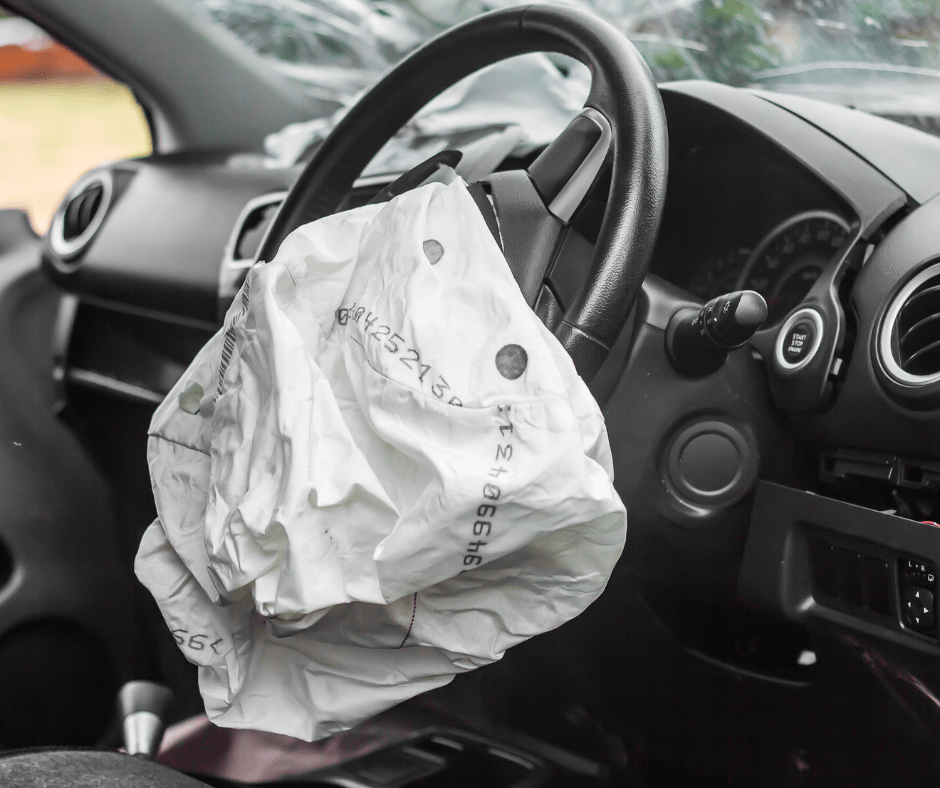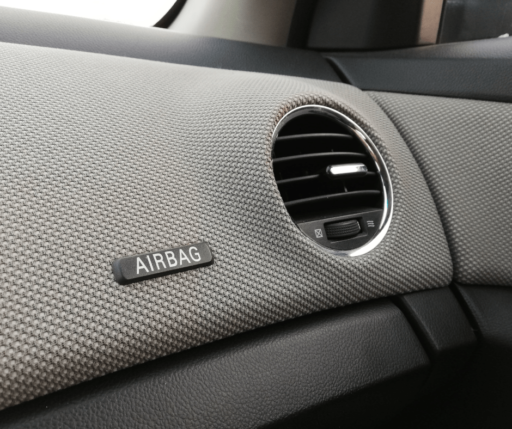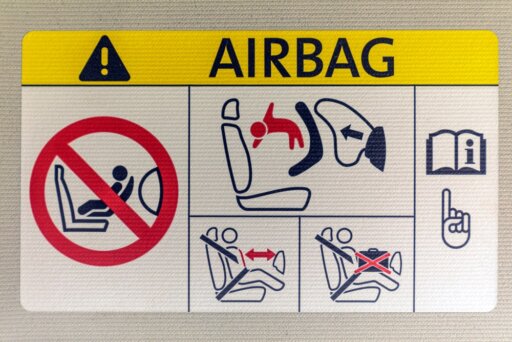Airbags revolutionized the auto industry. Designed to make cars safer and reduce the risks associated with accidents for drivers and passengers, the airbag has gone a long way to make driving less dangerous and to prevent serious injuries when accidents do occur.
That said, airbags can also cause injuries, and recalls are relatively common.
If you’ve been injured by a faulty product or an airbag that deployed incorrectly during a car accident, you may wonder where to turn. What do you do next, and how do you protect your rights?
In this blog, we’ll discuss the risks, benefits, and history of airbags, how to prevent airbag-related injuries, and what you need to know about protecting yourself after a product defect or faulty airbag injury.
TL;DR:
As air-bag-equipped vehicles have become the industry standard, air-bag-related injuries have also become more common.
Between 1990 and 2002, The National Highway Traffic Safety Administration (NHTSA) recorded more than 225 deaths associated with airbags.
While airbags can cause injuries, especially in the case of faulty units or a product defect, they save many more lives than they endanger. Between 1987 and 2017, frontal airbags saved 50,457 lives.
To prevent injuries from airbags, it’s crucial to position yourself and other passengers in the car safely. If you sustained injuries due to a faulty airbag, we recommend contacting a personal injury attorney for help understanding your legal options.
The History of Airbags: What You Need to Know
Airbags hit the market in the 1950s when American engineer John W. Hetrick developed and introduced the first comprehensive airbag system for cars.
Hetrick created the airbag after being involved in a near-fatal car accident with his wife and daughter.
The harrowing experience left Hetrick shaken and inspired him to develop a device that would keep passengers and drivers safer, in the event of a collision.
Hetrick’s first airbag system isn’t too different from modern airbags:
His approach used compressed air to rapidly inflate a fabric bag in the event of a collision.
While Hetrick’s invention offered many potential benefits, car manufacturers didn’t implement it widely until the 1970s. At this point, automakers like Ford and Mercedes-Benz started offering airbags as an added safety option.
Today, airbags are an industry standard. They’re built into all modern cars and designed to work with other safety features, like seat belts and accident prevention technology, to reduce the risk of injury during car accidents.
What Happens When an Airbag Deploys?
While airbags prevent more injuries than they cause, they deploy with such force that they can cause injury. Before we discuss that, let’s take a brief look at how airbags work.
Here’s the process airbags go through when they deploy:
-
Crash detection. When a modern vehicle experiences a sudden impact, the car’s crash sensors detect the collision and send a signal to the car’s built-in airbag inflator.
-
Inflation. When the airbag inflator receives the signal from the car’s crash sensors, it ignites a chemical reaction that fills the car’s airbags.
-
Deployment. The car’s airbags deploy rapidly from their storage compartments. Usually, modern cars have airbags in the steering wheel, dashboard, and side doors.
-
Deflation. Immediately after inflation, the airbags deflate as the gas that inflates them escapes through the porous fabric. The entire process takes less than one second from steps 1-4.
What Happens When Airbags Are Defective?
Airbags that are faulty don’t provide adequate protection during a car accident. Instead, they may fail to deploy during a collision or deploy improperly or unexpectedly, leading to injury or fatalities during accidents.
Here are a few of the risks associated with faulty airbags:
-
Non-deployment. Airbags may fail to deploy during a collision.
-
Late deployment. While functional airbags deploy immediately, faulty airbags may deploy so late that they don’t adequately protect the car’s occupants from injury.
-
Over Deployment. Sometimes, airbags deploy for too long or with too much force, causing injuries like fractures, abrasions, burns, and blunt force trauma.
-
Unexpected deployment. Sometimes, a product defect can cause airbags to deploy unexpectedly, when an accident has not occurred. This can cause the driver to lose control of the vehicle and may injure the passengers of the car.
To prevent injuries related to faulty airbags, it’s important to have your vehicle checked and serviced regularly. It’s also essential to be aware of any airbag recalls on your vehicle. To do this, visit www.NHTSA.gov/recalls to find out if any part of your vehicle is under recall and to schedule any needed repairs with a local dealer.
3 Tips to Avoid Air-Bag-Related Injury
To avoid air-bag related injuries, follow these tips:
-
Always wear your seatbelt. During an accident, your seatbelt will tighten and prevent your head and body from hitting the inside of your car. The seat belt also keeps your body away from the area where the airbag will deploy. With this in mind, wear your seatbelt whenever you get in the car.
-
Sit as far back from the steering wheel as possible. NHTSA advises drivers to sit as far back from the steering wheel and dashboard as is practical – at least 10” if possible.
-
Keep children in proper child restraint systems. Follow NHTSA recommendations regarding child restraining systems. Children under a year old should always ride in the rear seat in a rear-facing car seat. Children from 1-3 should sit in a forward- or backward-facing seat. Depending on their height and weight, children from 4-7 years old should sit in a forward-facing booster seat in the back seat.
If You’ve Been Injured by Airbags, Hire an Accident Lawyer to Represent You
If you’ve been in a car accident that involved injuries due to a faulty airbag, you need an attorney to represent you. Fortunately, Ward and Barnes is here for you.
Our experienced accident lawyers will work with you to provide the representation and advocacy you need and ensure you get a fair payout from the airbag manufacturer.
Want to learn more about our team and how we can help you? Contact us today.




